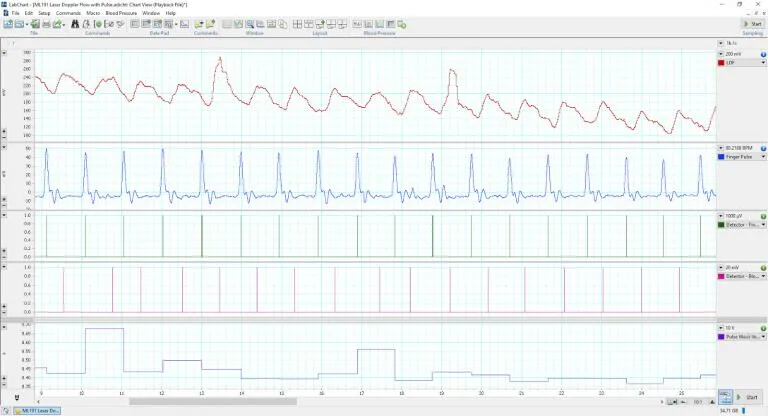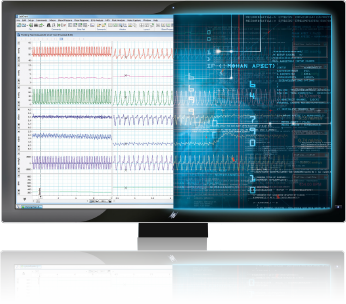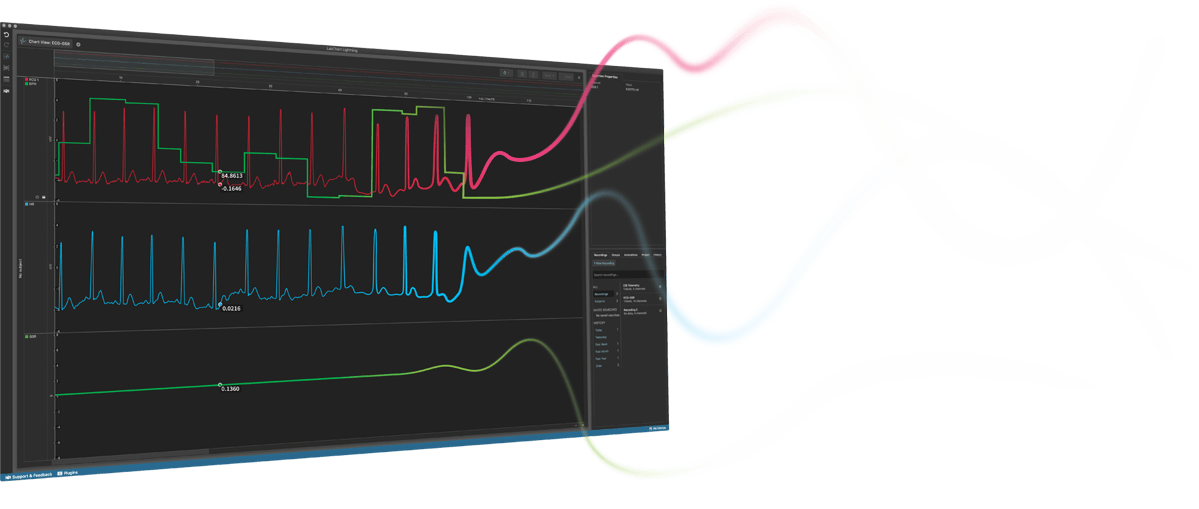Tissue Perfusion
Laser Doppler flowmetry (LDF) offers a continuous measurement of blood cell perfusion in the microcirculatory beds of skin tissue and other tissues without influencing the blood perfusion. LDF is measured in a relative unit of BPU (Blood Perfusion Unit).



All your analysis in one place
LabChart software is designed specifically for life science data and provides up to 32 channels for data display and analysis options that are powerful and easy to use. With auto-recognition of ADI and LabChart Compatible hardware, multi-window views, one touch recording, simultaneous recording from multiple devices, specialized preconfigured settings, easy sharing options and an interface that can be customized to show only the features you want to use.
Features and Add-Ons
Additional acquisition and analysis options to support your Tissue Perfusion analysis:


